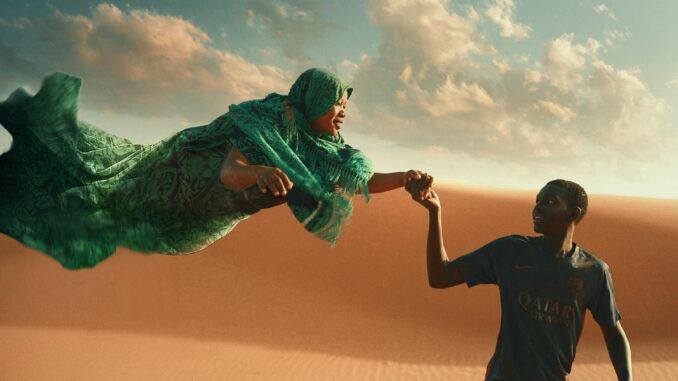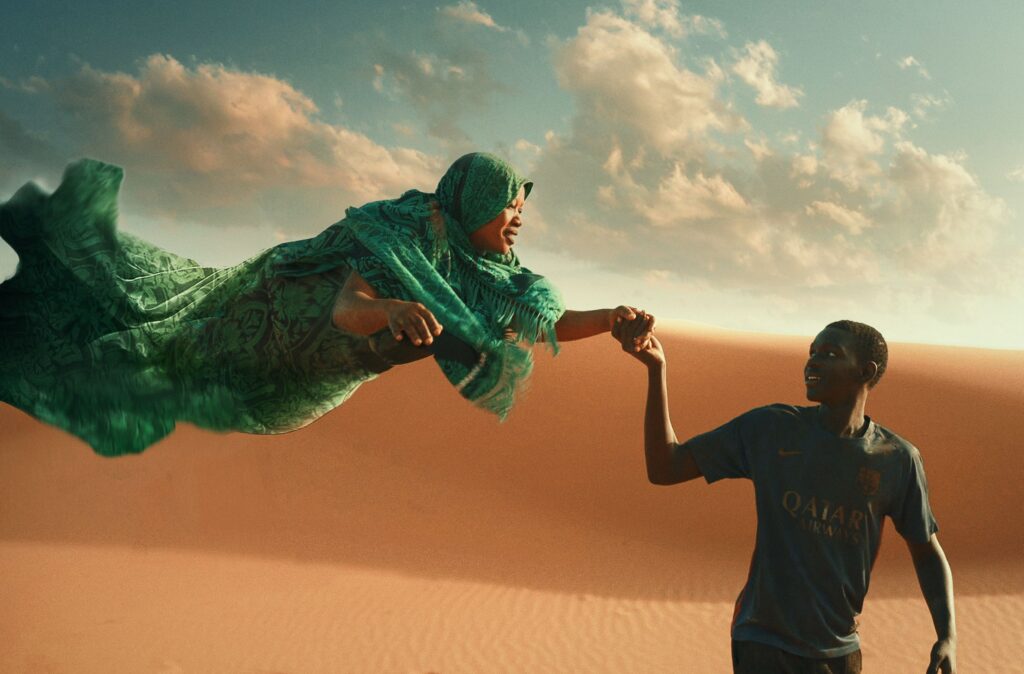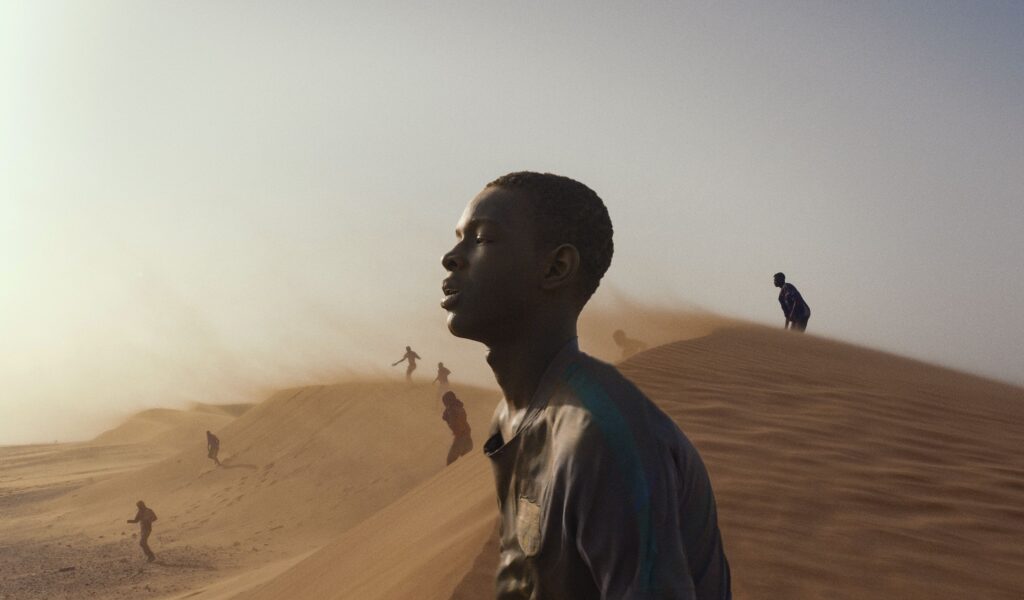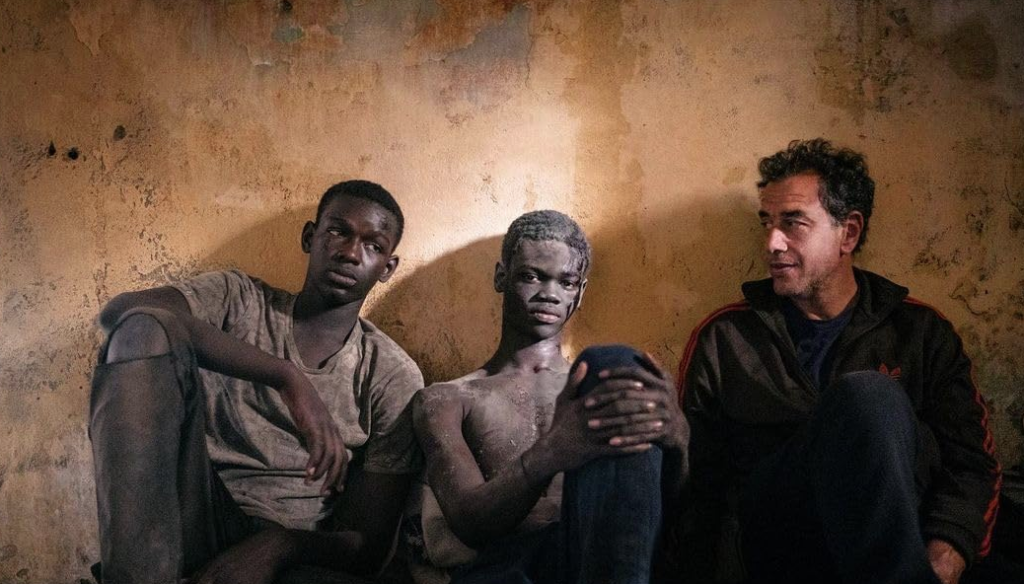
Io Capitano
The vision most people have of Senegalese Refugees is of boatloads of them arriving in Europe or dying at sea. In my interview with Director Matteo Garrone, he said he made Io Capitano as, “a reverse shot to tell part of the story that people don’t see or read.” This story of the two teenagers’ odyssey starts in their village in Senegal, where they are loved by family and celebrated for their musical skills. This is where we learn to care about the two Senegalese teenagers and understand who and what they leave behind to embark on their perilous journey. It is here we also experience the exceptional cinematography of Paolo Carnera who uses the atmospheric light and color to imbue life into the opening scenes.
Like any great adventure movie, you forget you are watching and camp out on the edge of your seat. This is due in no small part to the mesmerizing performances of the two young actors Seydou Sarr and Moustapha Fall who were discovered in a small town audition about 60 miles from Dakar Senegal. Sarr’s ability to inhabit and convert the emotional tug of war between a mother who forbids him to leave and loyalty he pledges to his best friend, who stokes the dream of a better life, won him the Marcello Mastroianni Award at the 80th Venice Film Festival for Best Young Actor.
Matteo Garrone, “I combined the story of three guys who made this journey. I worked with them before the script and after we finished shooting. They were with every step of the way behind and in front of the camera. I shot it from their point of view.” Garrone and his Senegalese cohorts elevated it to an emotionally transformative work of art that Matteo Garrone, who made his living as a painter, will always be proud of. Already it has earned him The Silver Lion for The Best Director at The Venice Film Festival and Italy’s entry into the Oscars for Best Foreign Film.

Among its accomplishments is the fulfillment of the dreams of Mamadou Kouassi, Seydou Sarr and Moustapha Fall whose great hope was to come to America and tell their story. Fall said in his interview at The Los Angeles AFI screening, “it has shown the world and youthful culture of Africa what is possible, a chance to live the dream.” And the musical dreams of Seydou and Moustapha voiced in the movie have taken shape in the real world; as their collaboration with award winning composer/orchestrator Andrea Farri netted them The Best Soundtrack Award at The Venice Film Festival. In fact it is Seydou and Moustapha singing on the youtube trailer. You can preview or listen to all tracks on Apple, Spotify and Amazon Music.
The dream however starts on the seductive picture of the cell phone which many in our society fall victim to. Matteo Garrone agreed, “There is a window on our society, our world. And from their point of view. Our world looks much richer than we know, because they don’t see the part behind that image. So it’s normal, it’s human; it’s understandable that they want to risk their life to arrive here.”

On every step on the tortuous journey from obtaining a passport to crossing the Sahara and the border to Libya, where they are imprisoned, they are met by increasingly predatory gatekeepers. The further they travel the less choice they have to return; a fact that is not lost on those who provide the necessary transport to the land of their dreams. Far from pumping up the mortal danger of this journey which is unlike any I have seen, Matteo minimized it. “I tried to tell only a part of violence and often show the violence from the point of view of Seydou. You know, I didn’t push too much in this direction, as the reality, unfortunately, is much, much worse 27, 000 people died in the last 15 years.”

Perhaps the scene that best typifies Matteo’s approach is when Seydou puts his life at risk to comfort a woman dying in the desert. As the guide and the train of followers fade into the distance it is Moustapha who jolts him back to the reality of getting left behind. Unable to bear the thought of deserting the woman, Seydou becomes lost in a reverie; where the woman unable to move, is guided into the air by Seydou’s hand. Forgiving ourselves for leaving someone behind, even to save one’s self may be the hardest task of all, something I learned working at the VA and in treatment centers when I was younger.

Mamadou Kouassi who suffered through this said, “Even today, wherever I watch the movie, I remember, I couldn’t save a human being in front of my eyes, dying in the desert. That we have been sold like slaves in Libya. You saw in the movie how we have been treated like animals. So this is a reality, and I think also, Matteo, when he asked me to narrate this story; I did not hide that simply because I saw it that it is important. For me, I remember that some centuries ago, they said that slavery has been abolished in America first, and then in Europe and other countries. The movie is about giving rights to all the people in the world”

Even when Seydou and Moustafa are finally given a chance to get on a boat it is not a gift or a rescue. Seydou who cannot swim or driven any boat is told that he can go if he pilots a boat full of other refugees and steer it to Italy. In reality this is a common practice among smugglers who avoid prison time in Italy by sending kids as young as 15 to captain their own vessels. This of course explains many of the maritime disasters. Seydou finds himself in charge of a boatload of refugees, some in dire physical condition and some even in labor. The final scene with Seydou at the helm is open ended. To end it any other way betray the truth the cast and crew worked so hard to bring to the screen.




Be the first to comment